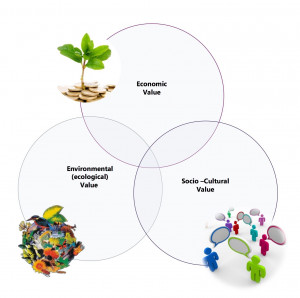Written by Denaye Hinds, OBM International
 With the UN dedicating 2017 as the Year of Sustainable Tourism Development (STDP) there is much discussion about what sustainable tourism is. At OBMI we believe Sustainable Tourism Development is when all aspects of tourism’s impact are considered while developing a plan for new, improved or re-imagined tourism. This means assessing, understanding, and accommodating for the economic, the environmental, and the socio-cultural impact of the proposed tourism. When we develop a sustainable tourism development plan not only are these impacts considered, but they comprise the framework for the Plan. Ensuring these components are considered also makes business sense for the long-term viability of the Plan.
With the UN dedicating 2017 as the Year of Sustainable Tourism Development (STDP) there is much discussion about what sustainable tourism is. At OBMI we believe Sustainable Tourism Development is when all aspects of tourism’s impact are considered while developing a plan for new, improved or re-imagined tourism. This means assessing, understanding, and accommodating for the economic, the environmental, and the socio-cultural impact of the proposed tourism. When we develop a sustainable tourism development plan not only are these impacts considered, but they comprise the framework for the Plan. Ensuring these components are considered also makes business sense for the long-term viability of the Plan.
In essence, a Sustainable Tourism Development Plan should provide economic feasibility for host communities, specifically:
Ensure viable, long-term economic operations
- Provide socio-economic benefits to all stakeholders
- Stable employment, income-earning opportunities, social services to host communities, and contributing to poverty alleviation
- Respect for socio-cultural authenticity of host communities, conserve living cultural heritage and traditional values and contribute to intercultural understanding and tolerance
- Make optimal use of environmental resources that constitute a key element in tourism development, maintain essential ecological processes and helping to preserve natural resources and biodiversity
When a tourism master plan is written with consideration of these components, it has shown to be successful for the community as a whole and achieves substantial long-term benefits. The Sustainable Tourism Development Plan designed by the Government of Antigua and Barbuda, Territoires et Tourisimes and OBMI is an example of a plan that has realized quantifiable results for the island nation’s tourism and development goals.
Tourism comprises 75% of Antigua and Barbuda’s economy, it is the core of the economy and has a key role in developing and creating value for its inhabitants. The plan’s strategy aims to leverage the positive aspects and provide solutions for the challenges it currently faces. Implementing the plan’s strategy will enable the islands to be a strong competitor and attract more tourists and potential real estate buyers. Along with increasing the brand awareness and value of the Antigua and Barbuda product, the plan has brought tremendous interest and development to the island nation. 4 of 7 sites identified in the Plan are currently in development stages resulting in over $1.1 billion in new and re-development Plans.
As more islands realize the positive impacts of Sustainable Development Tourism Plans it’s no wonder the UN has dedicated 2017 to their development. If you would like to learn more regarding STDP’s or those completed by OBMI feel free to contact us!